BREAKTHROUGHS

> SLIMMING FAT CELLS > BEYOND BOUTIQUE GENOMES
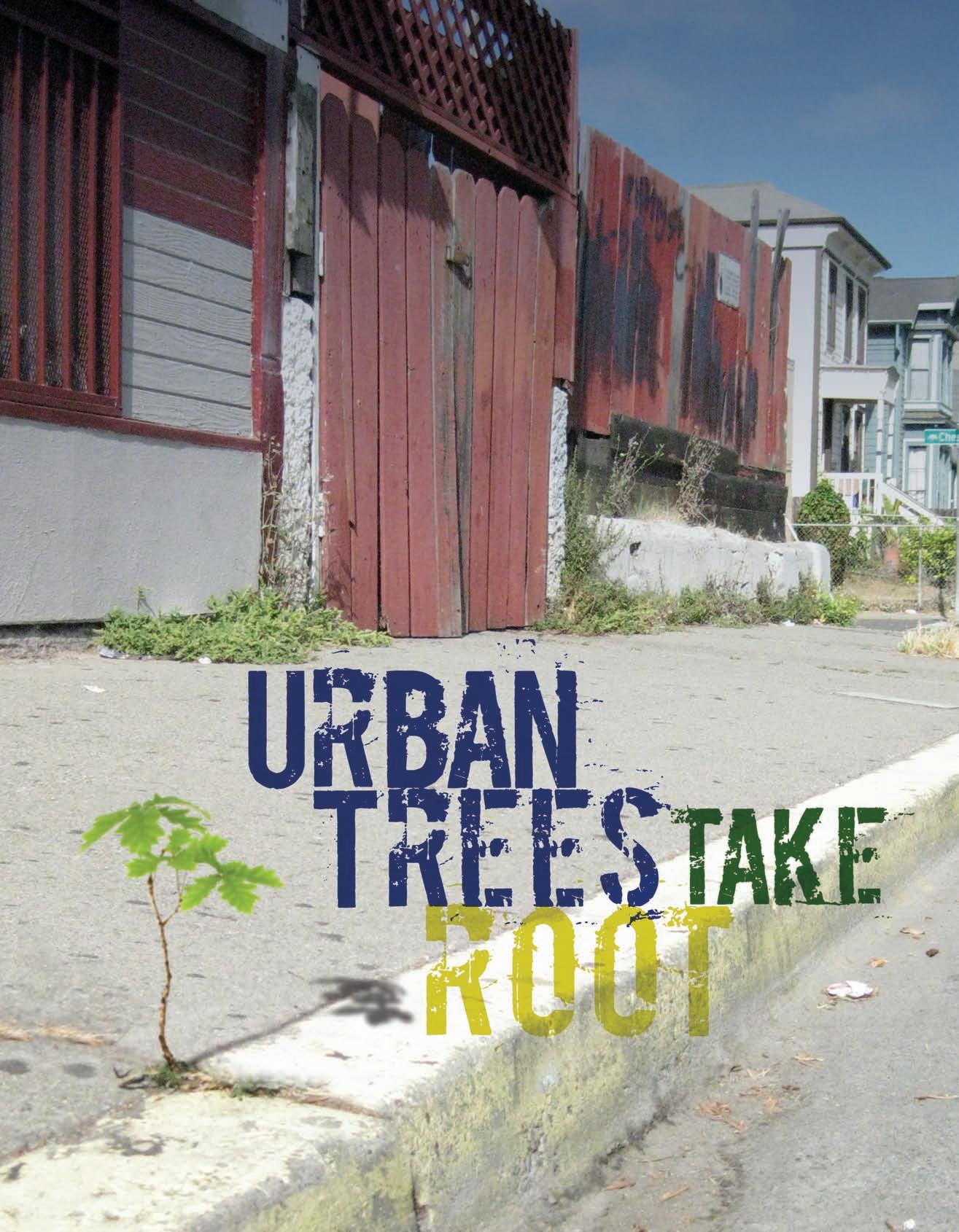
UC BERKELEY COLLEGE OF NATURAL RESOURCES • FALL 2009
The college is experiencing the same kind of pain that everyone in California is feeling right now. The financial cuts the college must absorb—21 percent of our budget, excluding faculty salaries—are very serious. Student fees are being raised, we’ve had to lay off talented and dedicated people, and those fortunate enough to still have positions will see pay reductions from mandatory furloughs. This is a crisis for our students, our economy and the future of California. But Berkeley is a resilient place.
Despite the economic downturn, there have been a number of positive developments over the last year.


• Our faculty have competed for, and secured, over $4 million in new research funds made available through the American Recovery and Reinvestment Act.

• Our extraordinary graduate students are doing well in the intense national competition for fellowships from agencies like the NSF and EPA.
• Our undergraduate students who come from households with incomes of less than $60,000 will have their system-wide fees fully covered by scholarships or grants under the University of California “Blue and Gold Opportunity Plan.”
• The board of our new CNR Alumni Association is helping us communicate opportunities to support our students in ways they need more than ever—internships, career networking, scholarships, and mentorship opportunities.
• Our donors continue to give generously to CNR, and these investments are having a positive impact in virtually every corner of the College. So…we are bruised but not beaten. We are still functioning as an engine of social change and economic growth. This issue highlights several faculty and students whose work is improving the lives of those less fortunate in Ethiopia, central Africa, and even West Oakland. The great news is that we know our community is committed to helping us continue this work. Everyone has an opportunity to contribute to our success, especially those alumni who are just beginning their careers (see page 28).
The college mission to teach, research, and protect the environment has never had more social relevance in this era of concern about biodiversity conservation, climate change, community and individual health, environmental policy, poverty, and hunger. I wouldn’t trade being a professor in the College of Natural Resources at Berkeley for anything. I welcome your comments at gilless@berkeley.edu
This page: iStockphoto





LETTER FROM THE DEAN
PHOTO CREDIT Cover: Riezebos Holzbaur/Christopher Harris
BREAKTHROUGHS




The cover story focuses on the benefi ts of urban reforestation and the unique approach Environmental Science, Policy, and Management Ph.D. student Lara Roman and her team use to return urban trees to Oakland.

The Berkeley campus is home to many unique and historic trees, each of which has its own story and significance. Throughout this issue, look for campus trees and their stories.

FALL 2009 2 BRIEFS Composting and Worms On the Ground in: URBAN LANDSCAPES Why I Do Science—Sydney Kustu Green Propaganda Vineyard Biocontrol …and more 14 BEYOND A BOUTIQUE GENOME 18 RENEWAL TAKES ROOT 24 SPOTLIGHT ON ALUMNI 28 COLLEGE SUPPORT 29 BACK STORY
Burn, Baby, Burn
Key enzyme tunes fat metabolism

Why do some people stay lean no matter how they eat? It hardly seems fair.
If you’ve always suspected that some people have a biological advantage staying lean, new evidence shows you may be right. Researchers led by Hei Sook Sul, professor of nutritional sciences and toxicology, recently identified an enzyme that plays a much more important role than presumed in controlling the breakdown of fat.
“We have discovered a new enzyme within fat cells that is a key regulator of fat metabolism and body weight, making it a promising target in the search for a treatment for human obesity,” said Sul, the principal investigator of the research.
Sul’s study compared mice without the gene for expressing this enzyme with a control group of normal mice. Researchers offered the two groups of mice an all-you-caneat buffet of tasty, high-fat foods. Notably, the enzyme
did not appear to affect appetite, as the two groups ate equivalent amounts of food. However, as the mice aged, the disparity in weight gain became clear. The researchers noted that the missing enzyme did not change the number of fat cells, but simply kept the cells from accumulating excess fat.
Before this study, the assumption had been that endocrine factors—hormones that travel through the bloodstream to fat tissue—were the key players in controlling fat metabolism and body weight. The new findings show that much of the action is occurring within fat tissue itself.
The researchers caution, however, that previous discoveries in fat metabolism and appetite regulation have not always translated well from mice to humans. Nevertheless, the newly discovered enzyme may become an attractive target in developing a treatment to combat obesity, the researchers said. If excess fat can be burned before it escapes the fat cell, it can never get into the bloodstream to harm other organs, such as the heart.
—adapted from an article by Sarah Yang
California’s budget crisis is causing real pain at UC Berkeley, but don’t count Cal as down and out. The campus is still ranked the #1 public university by U.S. News & World Report’s 2010 guide to U.S. colleges, while The Princeton Review listed Cal on its “green honor roll” with a top score for environmentally friendly policies.
DEAN:
J. Keith Gilless
EDITORS:
Cyril Manning
Kathleen M. Wong
CREATIVE DIRECTOR:
Yvo Riezebos
CONTRIBUTING WRITERS:
Anna Davison
Carol Ghiglieri
Carol Hunter
Lisa Lewis
Jaimini Parekh
Nate Seltenrich
CONTRIBUTING PHOTOGRAPHERS:
Bethany Bandera James Block
DESIGN & PRODUCTION: Riezebos Holzbaur www.rh-dg.com
©2009 by the Regents of the University of California. All rights reserved. Breakthroughs is a registered trademark.



PLEASE DIRECT ALL CORRESPONDENCE TO: Breakthroughs College of Natural Resources University of California, Berkeley 101 Giannini Hall, #3100 Berkeley, CA 94720-3100
TELEPHONE: (510) 643-1722
E-MAIL: breakthroughs@berkeley.edu
WEBSITE: http://nature.berkeley.edu
BRIEFS
PHOTO CREDIT: iStockphoto
CLIPPINGS 2 BREAKTHROUGHS FALL 2009
From Bunker Fuel to Begonias
Using worms and compost to clean up oil spills
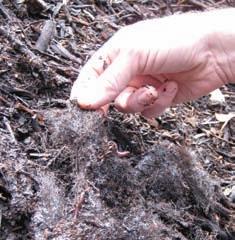


When the container ship Cosco Busan struck the Bay Bridge in 2007, spilling 53,000 gallons of fuel into San Francisco Bay, cleanup contractors used giant plastic sponges to soak up most of the oil, then incinerated the waste. It’s a standard practice, but one that Thomas Azwell, a Ph.D. student in environmental science, policy, and management, points out turns an oil spill in the water into a “carbon spill in the air.” Inspired by the Cosco Busan incident, Azwell was determined to find a better way to get rid of industrial oil. His method: composting.
Most oils break down fairly easily, but the bunker fuel of a container ship is problematic; its chemical structure is too complex for existing bioremediation methods—such as using mushrooms as decomposing agents or a humanmade wetland as a biological filter—to be effective. Azwell, however, aimed to intensify the decomposition process by using the high bacterial concentration in compost piles to break down bunker oil’s long carbon chains.
Azwell created a windrow, or compost pile, 50 feet long, 6 feet tall, and 10 feet wide. He mixed nine 55-gallon drums of bunker-C oil in with the organic matter, allowing the bacteria to use the oil as a carbon food source. That process produced 125-degree temperatures within the windrow for two months before the pile began to cool down— signaling that the bacteria had finished breaking down the organic materials. Next came the crucial test: had the bacteria effectively broken down the hydrocarbons? To test the soil’s toxicity, Azwell used earthworms. “Earthworms have an intimate relationship with compost,” he says. “If they
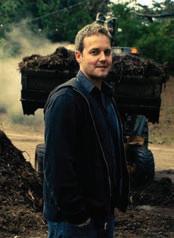
can eat the compost, their end product will be deemed safe for dispersal into the environment.”
Trucking in 2,000 pounds of worms, Azwell dumped them in the windrow to complete the work started by the bacteria, crossing his fingers that the hydrocarbons had been broken down and the worms would enjoy this feast. After 90 days, the worms in his vermicompost pile had not only survived, but doubled in population. “The worms loved it,” Azwell says. “They had plenty of food, water, and air.”
The worms not only validated Azwell’s remediation experiment, but added value to the compost by improving soil aeration and water retention properties, providing plant growth hormones, and increasing the concentration of key nutrients. Norman Terry, professor of plant and microbial biology and an expert in bioremediation, says that Azwell’s work has much promise. “Although final results have not yet come in, this low-cost, low-tech solution could be a very effective bioremediation method.”
Azwell works as part of Terry’s lab group to investigate the plant-microbe interactions at work here, and also in the lab of Jeff Romm, professor of society and environment, to look broadly at how his innovations could deliver industrial and social benefits. And he is already working with industry, transforming organic waste from California Costco stores into a soil amendment product called Vermigrow. He hopes that his successes will lead to low-cost, environmentally safe methods of oil waste disposal, as well as to advances in the use of earthworm culture in sustainable agriculture.
—Jaimini Parekh
BRIEFS
L-R: Composting makes oil fit for worms to eat; Thomas Azwell; hair mats soak up spilled oil and biodegrade; bunker fuel barrels
Photos courtesy of Thomas Azwell
COLLEGE OF NATURAL RESOURCES 3
WHEELER OAK (Quercus agrifolia) “Meet me at the Wheeler Oak.” The original Wheeler Oak is gone, but another coast live oak stands in its place on the south side of Wheeler Hall.
URBAN LA

With its roots in forestry and agriculture, the College of Natural Resources is not usually associated with urban issues. But from urban forestry to environmental justice, CNR faculty and students conduct a broad range of research projects and community outreach in cities around the world. Here are just a few CNR projects happening on the ground in cities.

Provoking Civil War among Ants
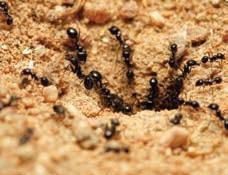

The research of Neil Tsutsui , associate professor of organisms and the environment, focuses on the genetics and behavior of the most common household pest in urban California: Argentine ants. The success of this invasive species is due to its highly cooperative, complex social structures—which include supercolonies that extend for hundreds of miles. One goal of Tsutsui’s lab is to understand the chemical signals these ants use to distinguish between friend and foe. The information could aid in developing control strategies that turn the ants against each other, causing colonies to self-destruct.
Buzzing for Wild Bees
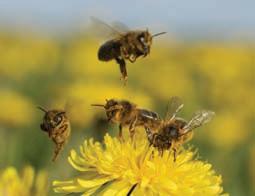








Professor Gordon Frankie , an urban entomologist with a passion for city bees, isn’t so interested in the black and yellow insects that make honey out of nectar. Instead, he’s obsessed with the 1,600 species of native California bees that are critical to California agriculture and biodiversity. Wild bees are on the decline, but Frankie believes that a patchwork of urban bee gardens—similar to butterfly gardens, but with a focus on native ornamental plants—could help save wild bee populations.
Stay and Defend…or Get Out of Dodge
When flames threaten property at the urban-wildland interface, U.S. fire agencies order mandatory evacuations before moving in to suppress the blaze. But the research of Scott Stephens, co-director of the Center for Fire Research and Outreach, supports a wildly different approach known as “Prepare, stay and defend, or leave early.” This Australian model not only requires homeowners to make sure their property is defensible, but also to commit either to evacuating well ahead of the danger (to prevent evacuation traffic jams) or staying to defend against flare-ups caused by errant embers. Property and environmental losses continue to mount under current U.S. strategy, which may explain why Stephens believes the new model may provide Californians with a “more sustainable coexistence with fire.”
IN:
ON THE GROUND
4 BREAKTHROUGHS FALL 2009
NDSCAPES

Illuminating Health Disparities







It’s no secret that in cities, there’s often a strong correlation between race, poverty, and disease. But to truly understand the connections, researchers need an understanding of the physical surroundings and layouts of affected neighborhoods. Maggi Kelly , director of Berkeley’s Geospatial Innovation Facility, is doing just that. Working with colleagues at Berkeley, UCSF, and Kaiser Permanente, Kelley is building a database tool called Our Space to make sense of variables such as demographic information, locations of parks, access to healthy food, and transportation networks. The tool will help researchers explore how place and behavior influence health, and hopefully inspire new ideas to address disparities.
Assessing Urban Watersheds
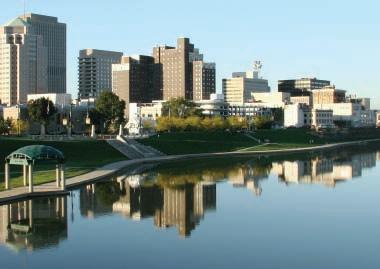

As a graduate student in environmental science, policy, and management, Alison Purcell (now an assistant professor at Humboldt State) led a series of studies that may help cities address the negative effects of urbanization on streams and catchments. By analyzing urban stream health in a variety of climates, Purcell came up with a “stressor gradient” that reveals how urban density and land use affect indicators of ecosystem health. Environmental managers can use this tool to assess urban streams when it isn’t feasible to do biological monitoring fieldwork. And cities can figure out which streams might benefit most from restoration and protection.
Urban Double Jeopardy
Rachel Morello-Frosch, associate professor of environmental science, policy, and management, examines how communities of color and the poor experience exceptionally high exposures to environmental hazards. One recent study illustrates the disproportionate impacts of climate change, particularly from increased pollution and extreme weather events, in cities. Morello-Frosch, whose research has highlighted the cumulative impacts of multiple pollution sources in East Oakland, argues that climate change policies should address the “double jeopardy” facing vulnerable communities. Such policies could target greenhouse gases and other emissions in densely populated neighborhoods hosting more than their fair share of polluters.
Visit http://nature.berkeley.edu/cities for urban living resources such as Professor Gordon Frankie’s Guide to Bee-Friendly Gardens site and the Berkeley Urban Pest Management Center. You’ll also find links to other urban projects, including the Berkeley Institute of the Environment’s Urban Sustainability Initiative, research on urban sweatshops in the developing world, the black market for African bushmeat in Western cities, and ecological restoration in San Francisco’s Presidio.
PHOTO CREDIT: iStockphoto
ON THE WEB
COLLEGE OF NATURAL RESOURCES 5
Better Living through Green Chemistry


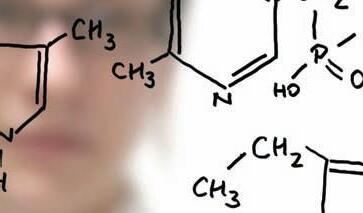




Berkeley researchers design solutions that promote sustainability
A lot of talk about “going green” focuses on what consumers buy, drive, eat, or use. But a new field focuses on eco-friendly products that are designed to reduce waste, contamination, and harmful human and environmental exposure from the get-go.

Berkeley researchers are at the leading edge of this emerging field, known as green, or sustainable, chemistry. With faculty from CNR, Chemistry, Engineering, Public Health, and Business and Law, the Berkeley Center for Green Chemistry is developing research and training programs ranging from the molecular origins of materials to health and environmental impacts, policy, and economics.
Led by Chris Vulpe, associate professor of toxicology, the center is creating an interdisciplinary graduate program that will train a new generation of sustainability-focused chemists, academics, and professionals to develop new methods for anticipating and detecting toxicity and to advance science-based, business-savvy, and policy-savvy solutions to motivate more sustainable industrial investment and consumer behaviors. In addition to Vulpe, CNR experts at the Berkeley Center include toxicologist Dale Johnson and environmental and social scientists John Harte, Alastair Iles, Rachel Morello-Frosch, and Dara O’Rourke.
—Cyril Manning
Next time you open a bottle of California wine, raise a glass to Eugene Hilgard. Berkeley’s first professor of agriculture, Hilgard planted a small vineyard and built a model winery on campus in the 1890s. His experiments helped identify a rootstock resistant to phylloxera, an insect that had devastated vines in Europe and threatened the nascent wine industry of California. He also produced small batches of wines made from grapes grown around the state. His reports, complete with tasting notes, helped farmers select the best grape varieties for their regions.

BRIEFS
PHOTO
iStockphoto 6 BREAKTHROUGHS FALL 2009
CLIPPINGS
CREDIT:
Ecologists Aid Restoration
Putting China’s Wetlands on the Map
While attempting to track avian flu in China, Peng Gong came up with the country’s only comprehensive wetlands map. When Gong compared his map to an as-yet unpublished map, he found that nearly 30 percent of China’s natural wetlands vanished between 1990 and 2000.
The Chinese government plans to create more comprehensive maps as it pumps money into wetlands restoration and conservation projects. The new maps and research will fill a gap for scientists and conservationists who have had to monitor the development of marsh and other wetlands, often as farmland, without knowing the full extent of the loss.
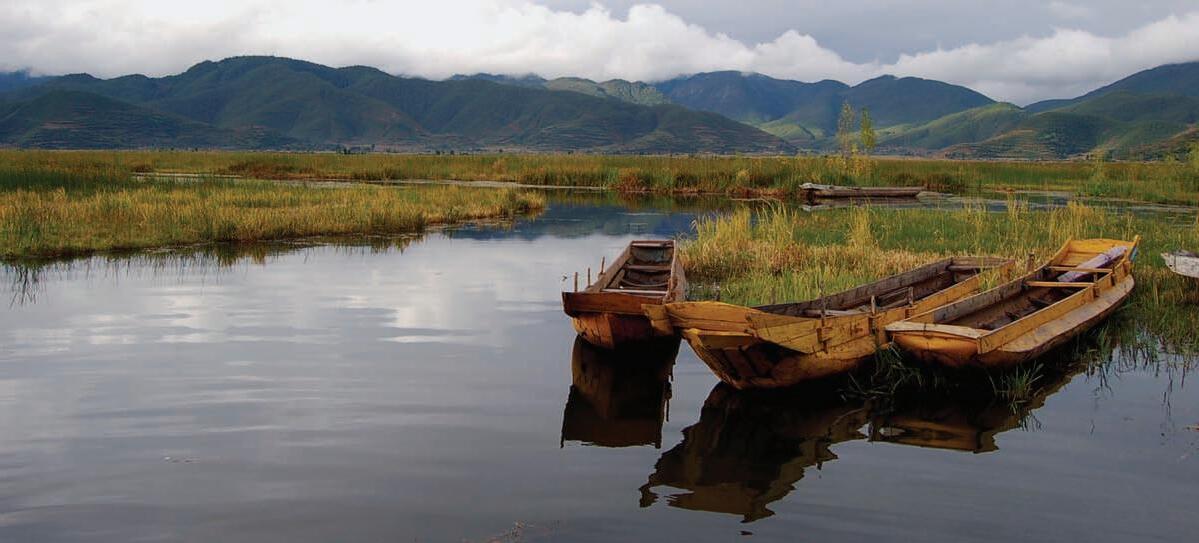
Gong, a professor of environmental science, policy, and management who holds a joint apointment at the Institute of Remote Sensing Applications in Beijing, signed on to the project because he wanted to track migrating birds, which are suspected of spreading avian influenza and which often spend summers or winters in wetlands.
But Gong had little to go on. A national wetland survey conducted between 1995 and 2003 lists only the total area attached to political districts. Other maps focus only on large lakes. For tracing avian flu, Gong needed more detail—

to see, for example, where there might have been smaller wetlands next to poultry farms. So he compiled Landsat satellite imagery of China taken around 1990 and 2000.
Demin Zhou, a hydroecologist at the Northeast Institute of Geography and Agroecology in Changchun, helped corroborate Gong’s satellite imagery by providing detailed information on local water features. “It will be a gold mine for us and for other researchers,” he says.
For now, the gold is in documenting how much wetlands have shrunk. For example, in the Sanjiang Plain wetland in the northeast where endangered red-crowned cranes spend their summers Gong notes a drop from about 9,000 square miles of wetlands to less than 4,000. “It’s a huge threat,” he says.
Gong has released a low-resolution version of his map, and says he would like to release the map in full detail. But China guards its geographical data, and Gong needs approval from the State Bureau of Surveying and Mapping first. He also plans to update the map with data from 2008.
—David Cyranoski
A longer version of this article originally appeared in Nature. Reprinted with permission.
BRIEFS
WILLEY REDWOOD (Sequoia sempervirens) One of the oldest trees on campus, the Willey Redwood, between Giannini Hall and Strawberry Creek, is named in honor of Samuel Willey, one of the original founders of the College of California.
COLLEGE OF NATURAL RESOURCES 7
GREEN PROPAGANDA

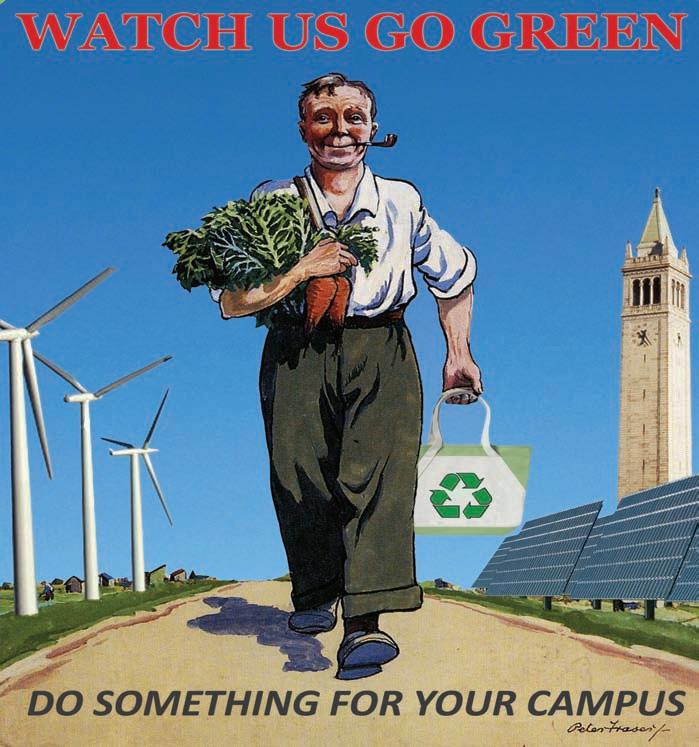
Howdoyoupromoteasustainabilityawarenesscampaignonacampusalreadyplastered withpostersandflyersforeverycauseunderthesun,andthatalreadyconsidersitself environmentallyfriendly?
Usegoodold-fashionedpropaganda.
Recentenvironmentaleconomicsandpolicygraduate
MarshallGeck,anenergyandwater outreachinternwiththecampusOfficeofSustainability,withhisgraphic-designerroommateChadKunert,devisedthiscleverwaytoprovidegreentipstotheCalcampus.The eye-catchingposters,postcards,andothercampaignmaterialsarereminiscentofwartime patriotismcampaigns.Theyhavebeenturningheads—andhelpingtogreenthecampus— sincetheybeganpoppingupearlythisyear.
Cal students cover the campus
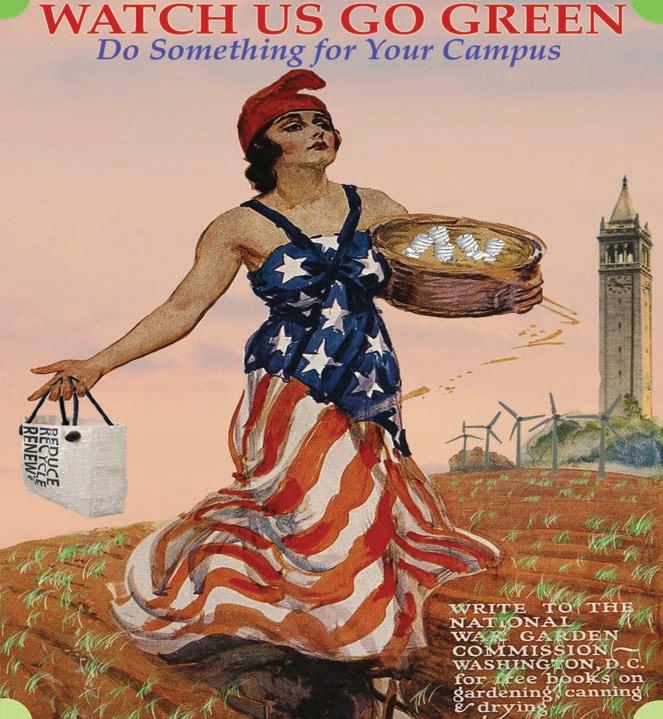
BRIEFS
8 BREAKTHROUGHS FALL 2009
SHAGBARK HICKORY (Carya ovata) Located in the West Circle, this tree replaces a predecessor killed by tear gas during the 1960s Free Speech Movement protests.
Vineyard



BIOCONTROL




Natural predators help vintners go organic
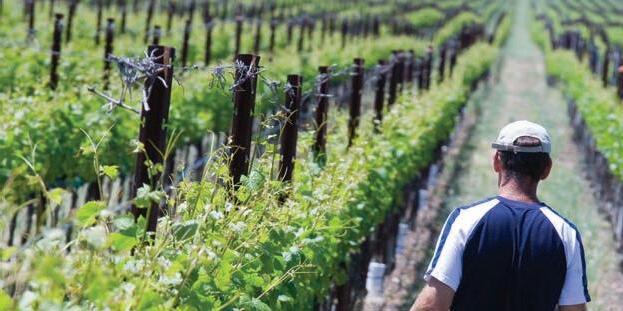
California is not only home to many of the world’s finest wines, but also to some of the industry’s most progressive vineyards. So why isn’t organic California wine more common? An increasing number of vintners are investigating ways to meet the demand for organic, but for many of them, the use of pesticides to alleviate crop-damaging bugs is tough to avoid.
That may soon change. Researchers from the Department of Environmental Science, Policy, and Management are working with growers in Napa and Sonoma Counties to perfect the art of vineyard “biocontrol”—promoting communities of natural predators to thwart harmful insects like leafhoppers and vine mealybugs.
Professor Miguel Altieri and Cooperative Extension Specialist Kent Daane, along with agroecology graduate students
Albie Miles, Houston Wilson, and Paul Roge, are investigating a variety of biocontrol strategies, such as intercropping flowering groundcover with the wine grapes to promote natural predators.
If David Gates, vice president of vineyard operations for Ridge Vineyards, is any indication, once growers see the effects of increasing biodiversity in the vineyard, they will be sold. Gates has already begun to implement what he’s learned from the research plots in Sonoma County in his vineyards in the Santa Cruz Mountains, turning, as he says, theory into practicality. And that’s exactly what the Berkeley researchers have in mind.
WhyIDo Science Sydney Kustu 003


I do science because at one time it was forbidden fruit. When I was a child, men had professions; women were assistants. As a young woman I developed a passion for understanding how cells replicate themselves, how they integrate their parts into a self-reproducing whole. To pursue this passion, I worked with the intestinal bacterium Escherichia coli. My lab explored its chemical conversions of nitrogen, an essential element. We were able to characterize new components of E.coli that are involved in acquiring nitrogen and sensing when this critical nutrient is scarce. Today we work with physicists at UC San Diego who are modeling nitrogen conversions in E.coli and studying the mechanisms that keep them in balance. We make and test predictions that should allow us to deepen our understanding.
We were fortunate that our work with the nitrogen chemistry of E.coli led us to the Rh blood factor of humans. Molecular sequences now reveal distant evolutionary relationships between bacterial and human proteins. The Rh protein is abundant in the membranes of red blood cells. Although differences in its antigenicity are well known to cause immunological problems in blood transfusions between some mothers and their newborns, the primary function of Rh proteins had been unknown. By studying their microbial relatives, we’ve found that Rh proteins probably help humans and other animals dispose of carbon dioxide waste and keep their body fluids at neutral pH.
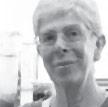

Doing science has been sustaining and gratifying for me. There has been a great deal of change since I was recruited here from UC Davis in 1987, and the large number of young women scientists working in my department and in the College of Natural Resources today is heartening.

As I think about the past, I am moved by a passage from T. S. Eliot:






































We shall not cease from exploration And the end of all our exploring Will be to arrive where we started And know the place for the first time.
 Making vineyards inviting to natural predators helps grape growers go organic. Photo courtesy of James Block
—Cyril Manning
Making vineyards inviting to natural predators helps grape growers go organic. Photo courtesy of James Block
—Cyril Manning
COLLEGE OF NATURAL RESOURCES 9
Research in a

Dan Fahey doesn’t visit Virunga National Park for the dramatic scenery.
Although this stunning setting in the Democratic Republic of Congo, in central Africa, was once known mainly for its active volcanoes and abundant wildlife, the park is now home to rebel groups and refugees in one of the world’s poorest and most dangerous countries.
Forty-year-old Fahey, a Ph.D. student in the Department of Environmental Science, Policy, and Management, travels here to help explore how this land is being ravaged to fuel the deadliest conflict since World War II. “They’re one of the poorest countries on earth because their resources are being exploited,” Fahey says. “When you enter Congo from Uganda or Rwanda, it’s like entering a different Africa—
there is no electricity, the roads are terrible, and the poverty is more extreme.”
Fahey’s experience as a Navy veteran during the Gulf War (he was honorably discharged as a conscientious objector) eventually led him to Tufts University’s Fletcher School of Law and Diplomacy, where he wrote his thesis on the environmental consequences of war. Fahey was particularly struck by the disparity of the attention paid to wars in Europe and the Middle East versus those in Africa. Even within Africa, he notes, the situation in the Democratic Republic of Congo is often overlooked.
Fahey’s work focuses on the region’s troubles since the beginning of the First Congo War in 1996, when the government was overthrown in a coup supported largely by forces from neighboring Rwanda and Uganda. Those countries subsequently masterminded the Second Congo War— which involved five other foreign nations and more than twenty different armed groups. The conflict continues to exploit Congo’s rich natural resources, particularly its gold. While many people have done research in Uganda, few have done so in Congo because of the heightened danger.
To conduct his fieldwork, Fahey relies on a companion known as a “fixer”—equal parts translator, research assistant, and facilitator—to help him gain entrée into Congolese society. He eschews the SUVs favored by expats, instead hurtling down roads on the back of a motorcycle or in a car driven by a local. Fahey once unknowingly rode in a car with a militia leader. “My fixer was convinced he was going to rob us,” he recalls—a prediction that, fortunately, went unrealized. Bribes of $300 to $400 are expected by local officials, and are simply part of the cost of doing research in Congo.
“Probably everyone in the U.S. has some connection to Congo and doesn’t realize it,” Fahey says. The country’s rich natural resources include copper, gold, diamonds, and coltan, a mineral widely used in producing cell phones and other electronic goods bound for global markets.
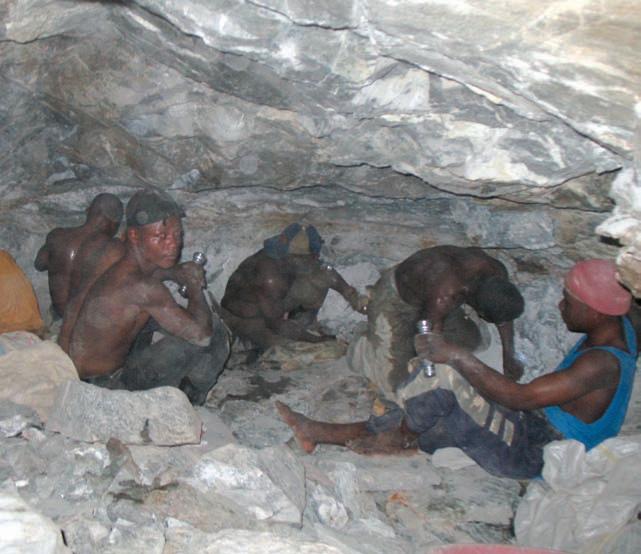
BRIEFS
10 BREAKTHROUGHS FALL 2009
Ravaged Land
Cal student works to slow exploitation in the Democratic Republic of Congo
But the value of those resources comes at a terrible cost to the country. The spoils not only fund the nation’s ongoing bloodshed; their extraction also devastates the environment and affects public health. Fahey likens the unrestrained gold mining there to the situation during the California gold rush, with dangerous mining practices washing away entire hillsides and contaminating water supplies with mercury. He recalls visiting an underground gold mine that was finally shut down because of its unsafe conditions. But, he observes, “Even if people are aware of the risks and dangers, they’re just trying to survive.”
Fahey admits he’s given instructions to his brother about what to do if anything should happen to him. He takes precautions when he can, but has no plans to abandon his research there. In fact, he recently expanded his dissertation, which originally included events up to 2003, to cover the most recent wave of conflict in Congo. “No one knows when it will stop,” he says.
—Lisa Lewis


Facing page and above: Mining takes a terrible toll on the people, environment, and economies of the Democratic Republic of Congo.

Top: Poor roads and other infrastructure force Dan Fahey to get around however he can in central Africa.
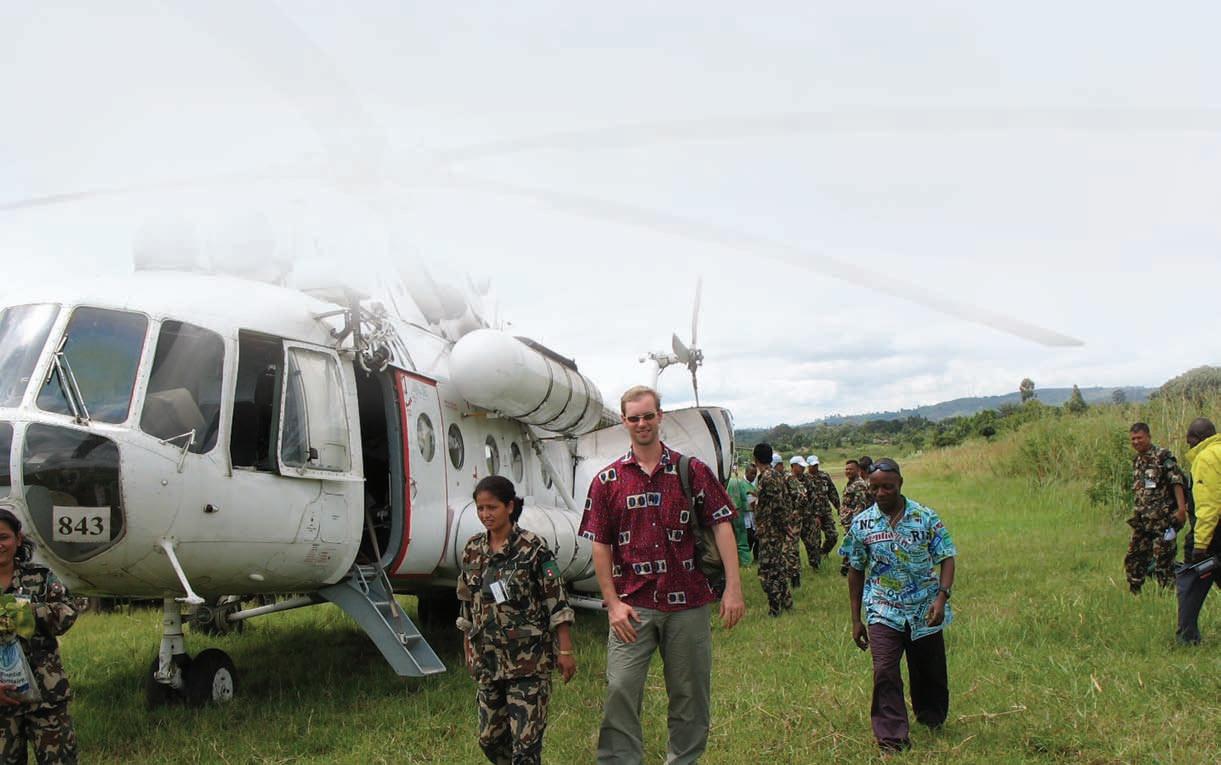
BRIEFS
Photos courtesy of Dan Fahey
COLLEGE OF NATURAL RESOURCES 11
CHILEAN WINE PALM (Jubaea chilensis) Originally part of the botanical garden at the current site of Haviland Hall, the palm now resides in Strawberry Canyon.
SURF AFRI SURF AFRI Swimsuits Aid Africa














































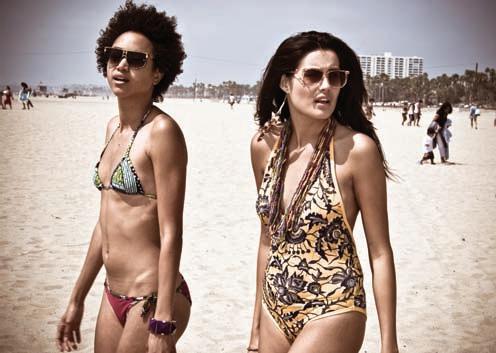


It’s the midst of Paris Fashion Week, and Yodit Eklund is giddy with exhaustion. Her Bantu swimsuit line, made in Africa from vibrant African prints, is a hot commodity on the catwalks.
Eklund (Environmental Economics and Policy, ’07) and her brother Yohannes Mekbebe founded Bantu to bring a new mode of economic development, manufacturing, to a continent known more as a supplier of raw materials. “I wanted to start a business in Africa and realized the garment business was a good idea because it needs a lot of hand labor,” Eklund says.
A beach brand made perfect sense. Born to an Ethiopian mother and an American diplomat father, Eklund has lived all over Africa and knows its extraordinary beaches firsthand. From Cape Town to Zanzibar to Mombasa and Casablanca, the continent has a surfeit of sunny sand and killer surf.









Swimsuits are an ideal way to slip African designs into Western clothing, says Eklund. “A dress that’s completely African print is a bit much. But the surface area of a swimsuit is so small. It gives fashionistas the perfect dose of something African.”
Bantu employs some two dozen women in Ethiopia who cut and sew the swimsuits. The cloth itself is patterned with designs based on traditional West African wax cloth textiles. Eklund is thrilled that people have been so interested in products coming from Africa. “I couldn’t have asked for more,” she says.

BRIEFS
Photo of swimwear courtesy of Bantu Swimwear
mwear
wa
d f ot an
hi m s n t at p “I ea
some
o m or —Kathleen
to swim e e two s. The
onal
—Kathlee to of swimwear cour W e b n’t Pho 12 BREAKTHROUGHS FALL 2009
pia who cut and terne oth
s co ays thrilled Africa ay t ress are se om f
nte
ys uc
nd s the
uit io
M
clo
Af ople couldn’t have ask
CA CA

“Does providing good medical care produce the best health policy?”



Health and environmental economist Michael Anderson’s undergraduate course on public policy focuses on how much money society invests in public health, what types of policies work, and why. His class explores issues of public goods, market failures, and how people behave differently when they are insulated from risk.
With healthcare reform at the top of the national agenda, Breakthroughs asked Anderson to share key lessons he hopes will stick with his students—and with you:
1 2 3














The U.S. spends twice as much per person on healthcare as any other developed country, yet our health measures are no better.




Medical care, environmental improvements, and public health programs can all improve a population’s health. From an economist’s perspective, the best investments are those that save the most lives per dollar.

It is virtually impossible for a family to buy reasonably priced private health insurance because, generally, anyone who needs to buy high-priced health insurance is likely to already be very sick. This type of “adverse selection” will continue to occur as long as healthy individuals can choose not to purchase insurance. This is why the prospect of requiring everyone to purchase health insurance is always an issue in healthcare reform.
A lot of people worry that genetic patents could hinder biological research. But resource economist Brian Wright and postdoctoral researcher Zhen Lei surveyed biologists and found that most aren’t tripped up by patents. A bigger problem, it turns out, is navigating the complex legal agreements covering the use of reagents and other key biological tools subject to intellectual property law.
BRIEFS
CLIPPINGS
PHOTO CREDIT: All others iStockphoto COLLEGE OF NATURAL RESOURCES 13

It took an international consortium of scientists years and several hundred million dollars to unravel the complete genetic code of a human being for the first time. In 2008, nearly a decade later, U.S. scientists sequenced James Watson’s genome in mere months. These days, thanks to swift strides in technology that have slashed the cost and time required for gene sequencing, having a readout of your own DNA is no longer just the perquisite of Nobel Prizewinning scientific superstars. Now sequencing a genome takes a month and can be had for the cost of a new car.
Gene sequencing has gotten so fast and affordable that it’s moved beyond the study of single reference individuals. By obtaining more sequences, researchers can investigate genetic differences across populations, correlate them with observable traits, and uncover the footprints of evolution.
Berkeley professor John Taylor and colleagues
N. Louise Glass in the Department of Plant and Microbial Biology and Rachel Brem of Molecular and Cell Biology are putting the latest sequencing technology to work in their studies of the model organism Neurospora , a bread mold. They are about halfway to their goal of sequencing 100 Neurospora genomes, and plan to make their
genomes available to other scientists working on the fungus.
Faster and cheaper technologies are making genomic sequencing a standard part of the laboratory repertoire, Taylor says. The first Neurospora genome sequence cost $5 million to complete in 2003; the next two cost $400,000 apiece to sequence five years ago; and the most recent each cost about $600.
With the genomes of many individuals, scientists can study variation within a species in more detail than ever before, and attempt to correlate those differences with observable characteristics. In the case of Neuros-

pora, Taylor and his colleagues investigate the genetic underpinnings of traits such as the organism’s growth rate, colony form, or food preference.
New sequencing technologies are also allowing scientists to study how evolution progresses on a genomic level. They are looking for the genetic changes that allow some organisms to better adapt to their environment, giving them a competitive edge.
“A signature of natural selection remains in the genome,” Taylor says. Fungi, for example, seem to be continually adding or deleting genes, and those changes can stick when they change food preferences.

Taylor and his colleagues carried out a genetic study of the fungus that causes valley fever, which commonly infects people in desert regions of the Americas. They found the genetic traces of the organism’s shift from plant-based to animal-based hosts. “That’s natural selection,” Taylor says. “That’s evolution we can see.” Finding the genes enabling valley fever fungus and other pathogens to cause disease may lead to new ways of controlling their mayhem.
Sequencing technology can also be used as a technique to spy on gene activity. To convert genetic information into proteins, cells make templates made



CLIPPINGS

of RNA molecules. That means RNA levels reflect how often genes are being transcribed. Scientists once had to settle for relative comparisons between gene expression in different organisms or under different conditions. Now, says plant and microbial biology professor N. Louise Glass, new sequencing technologies produce data on the actual number of RNA copies being made. “It’s much easier to compare one experiment to another,” Glass says. “That’s a big plus.” This same technology also offers a window into development. “We can look at organisms at various stages of development and see what genes are active at those different stages,” Taylor says.
Steven Brenner, an associate professor in the Department of Plant and Microbial Biology, is studying the genome of the fruit fly to understand how proteins are built. In particular, he is revealing how redundant sequences of RNA are removed before protein synthesis begins. In cells, this work is performed by proteins called splicing factors. Most of the splice factors found in fruit flies are shared by humans. Brenner says that studying how they work should help reveal how genetic mutations can lead to disease—and ultimately, how those diseases could be treated or even prevented. Without the latest advances in sequencing
Remember the campaign against “Frankenfood?” A decade ago, it bore fruit in the form of European restrictions on biotech products and other regulatory changes. These laws have shrunk the flow of biotechnology innovations in agriculture to a trickle, say professor of agriculture and resource economics David Zilberman and collaborators. While early regulations were largely a response to risks associated with pest-control biotech, the researchers say, they also contributed to a slowdown in innovations such as nutritional improvements and other product-quality traits.
16 BREAKTHROUGHS FALL 2009
“It seems sort of a crime to have all these enormous amounts of data and only be using it for simple things.”
PHOTO CREDIT: iStockphoto
technology, Brenner says, this research would be “completely unthinkable.”






Biologists once struggled to obtain any scraps of genetic information. The new availability of gene sequences, Glass says, means “you’re not going to want for data.” These days, the challenge is in managing and interpreting this tidal wave of genetic information. Computational tools, she adds, are essential to make sense of it all. “It seems a crime to have these enormous amounts of data and use it only for simple things,” Glass remarks. Indeed, says Taylor, “The biologists who are most in demand are those who have computational skills.”
The need for computational biologists will only rise as sequencing data arrives at an even faster pace. “Within five years,” Taylor says, “you’ll be able to get
the complete sequence of any organism you want for an amount you can afford.…The promise is that within a few years, you’ll be able to sequence a human in 15 minutes, for $100.”





An affordable genome brings the possibility of health care tailored to each patient’s DNA. “Medicine will be genomic,” he adds. “You’ll have a copy of your personal genome, and every week computational biologists will find a new correlation between certain genetic differences and your condition. You’re going to keep going back to your physician to get updated.”
“We’ll be able to understand an individual’s biology, understand what their risks may be and what they might do to have the healthiest possible lives,” Brenner says. That would be a boon for everyone, not just James Watson.
20 Years of Plant & Microbial Biology


In the summer of 1989, the long process of reorganizing biology at Berkeley was finally realized, officially creating what is now the Department of Plant and Microbial Biology.
At just that time, Professor John Taylor and three colleagues, sabbatical visitor Tom White, postdoc Tom Bruns , and graduate student Steve Lee , were hard at work on a chapter for the laboratory manual PCR: Protocols and Applications. Despite its slightly dry title, “Amplifi cation and direct sequencing of fungal ribosomal RNA genes for phylogenetics” was destined to become a scientific classic. Explaining how standard biotechnology tools can help infer evolutionary relationships, the paper has become one of the most- referenced research publications produced by UC Berkeley scientists. Recently, it attained an extraordinary 5,500 citations in other scientific articles. That success parallels the ascendancy of PMB, which celebrated its 20-year anniversary with a symposium and reception on September 2.
Today, Tom Bruns is a professor and Division Chair in PMB, Steve Lee is a professor at San Jose State University, and Tom White, then a researcher with the pioneer biotech company Cetus, is now Chief Scientific Officer and Vice President for Research at Celera.
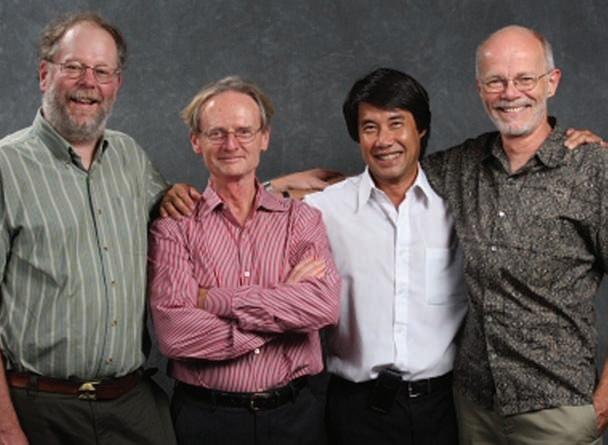
An early example of basic research carried out between industry and academia, the paper was a precursor to many future department partnerships with industry. These have included a controversial yet ultimately positive funding agreement with Novartis as well as PMB’s key role in founding the recently established Energy Biosciences Institute.
The anniversary symposium bridged the department’s history and its future. Rod Park , professor emeritus and a principal architect of the biology reorganization, spoke about the history of biology at Berkeley, while emeritus professors Milton Schroth , Richard Malkin , and Jim Fristrom reviewed their respective departments, Plant Pathology, Cell Physiology, and Genetics. In the second half of the symposium, a few PMB faculty looked to the future: Britt Glaunsinger spoke of investigating how viruses infl uence gene expression; Arash Komeili discussed bacterial nanomagnets; Chelsea Specht presented her work on the evolution of flowers; and Chris Somerville, director of the Energy Biosciences Institute, offered insights into biofuels. While reorganizing biology at Berkeley was contentious in the 1980s, the PMB emeriti, faculty, alumni, and friends who gathered for the twentieth anniversary celebration agreed that it positioned the department for its current preeminence in the twenty-fi rst century.
—Cyril Manning
—Anna Davison
L-R: Thomas D. Bruns, Thomas J. White, Steven B. Lee, John W. Taylor
Photo courtesy of James Block
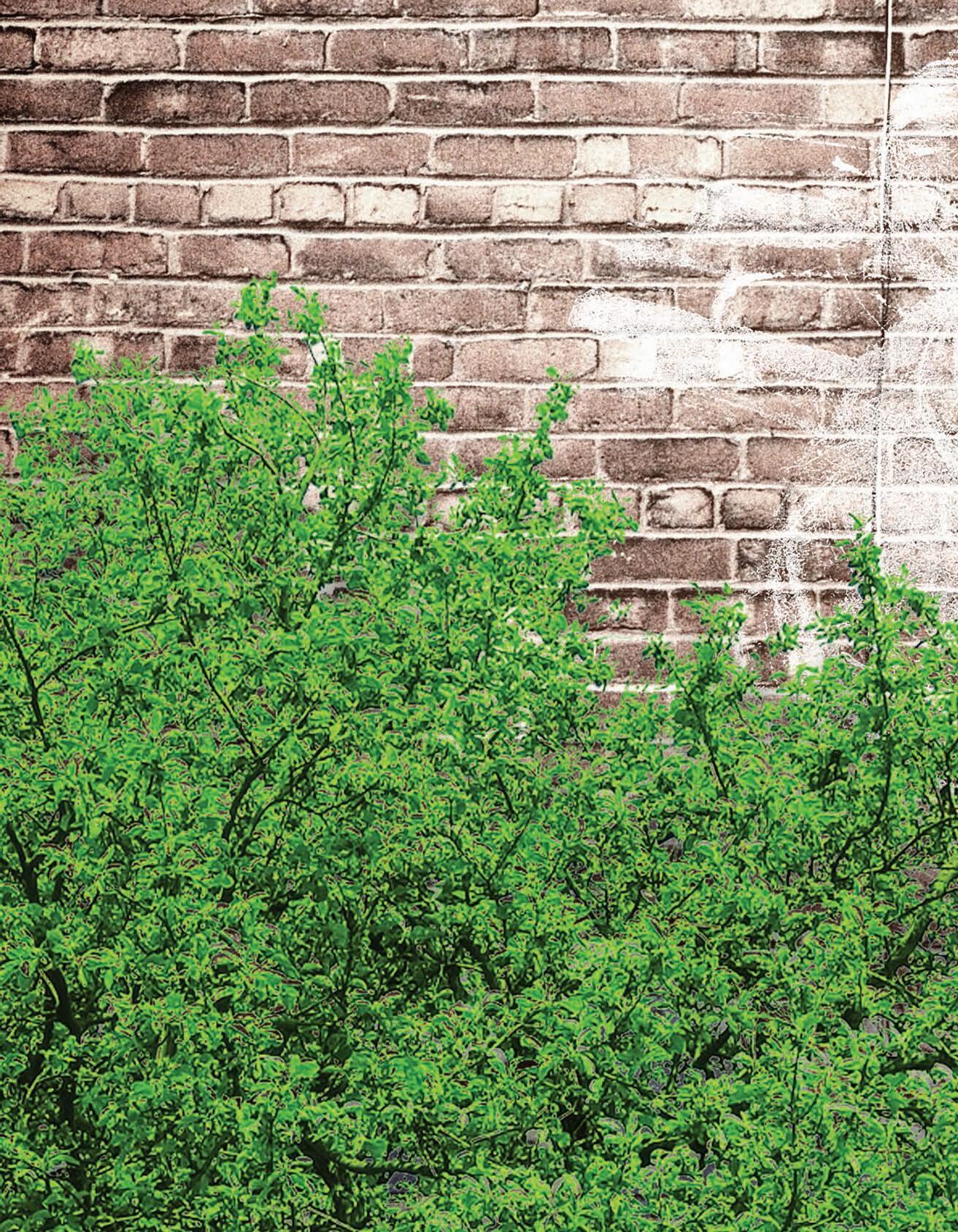



18 BREAKTHROUGHS FALL 2009
“I was doing this with another student several Saturdays in a row, and one day the bus driver asked us, ‘What are you girls doing down at 35th and MLK?’ I told him I was checking on the trees, and he said, ‘What? Why are you checking on trees in the ghetto?’”

Not many Cal students venture into the streets of West Oakland, and certainly not to look at the trees. But for Roman, urban forestry is a bridge between adjacent but vastly different worlds. “I think it’s important to bring students who are studying the natural resources of our environment out here,” she says. “What does it mean to study ecology in the city; not just in Berkeley, but in the tough neighborhoods— working with local communities, looking at issues of environmental justice, exploring how it all fits together?”
Roman is one of several UC Berkeley students doing research with Urban Releaf, a nonprofit
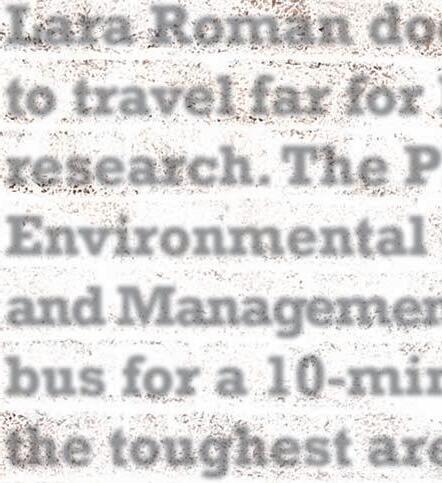
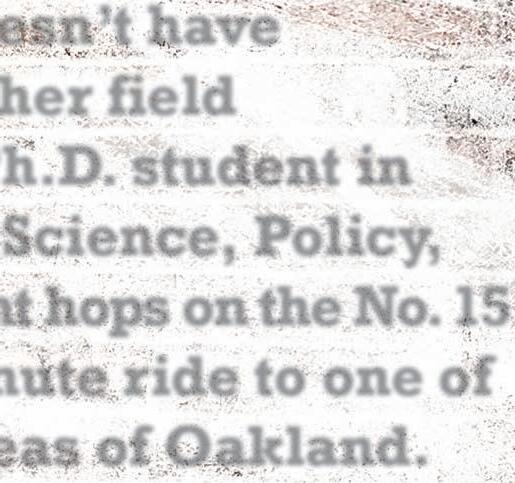



working to transform Oakland’s concrete jungle into an urban forest. Her goal is to understand why some city trees thrive and others die, and her study is the first of its kind in a low-income community, where the benefits of street trees may have special significance.
Urban trees trap air pollutants and rain water, improving the quality of storm runoff and providing fl ood control. Their shade helps mitigate the eff ect of urban heat islands, lowering air conditioning costs. They raise property values, provide wildlife habitat, improve neighborhood aesthetics, and foster community pride. All of these benefi ts are sorely needed in West Oakland, where poverty, pollution, and crime are high, but tree canopy cover is low. Urban Releaf has planted more than 14,000 trees since 1998, employing at-risk youth and welfare-to-work participants through planting and maintenance projects.
Story and Photographs by Carol Hunter 19 COLLEGE OF NATURAL RESOURCES
Ashley Duval, a 2006 graduate in conservation and resource studies, completed an institutional analysis of Urban Releaf for her undergraduate research project. “I was blown away by the conditions I saw within five miles from my own school,” she wrote in her thesis. “However, I was even more impressed by the efforts of this local nonprofit organization.” Duval began volunteering with Urban Releaf, and is now a community outreach coordinator for the organization that she says is not simply planting trees, but building communities.
n a spring day in March, I went to Oakland for a tree tour with Roman and Kemba Shakur, Urban Releaf’s executive director and the heart and soul of the organization. Shakur’s office is on a block lined with mature, flowering, evergreen pears and purple-leafed plums. A coastal redwood stands tall in front of the building; next door a towering Victorian box tree covered in white flowers perfumes the street with the scent of honeysuckle. The air, filled with the sound of songbirds, feels fresh and cool.
When Shakur moved to that block about 10 years ago, she says, there wasn’t a single tree.

I am greeted by Shakur’s son, 21-year-old Jamal Davis. Like his three brothers and sister, Jamal grew up in Urban Releaf, helping with tree planting and maintenance since the tender age of 10. He is now in charge of the tree planting program, maintaining the GIS/ GPS database, and training youth interns and volunteers in proper planting techniques. His 20-year-old brother Hakim focuses on maintenance.
A few moments later, Shakur bounces down the stairs. Her long braids swish down her back, and she bubbles excitedly to















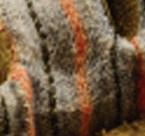



When Roman came to Berkeley for her Ph.D., she was on the lookout for an urban forestry group to continue tree mortality research she had begun in Philadelphia. She tells me about her introduction to Urban Releaf. “We were driving around Oakland in Shakur’s car, and she was shouting out the window to people on the streets, ‘Hey, do you live here? We planted those trees. Can you water them?’ Or calling to some boys on the street who should be in school, ‘Hey, do you want to come work with us?’”
Our tour begins at a planting site directly under the BART tracks, in the middle of busy Martin Luther King owering trees includes Saratoga bays, cherries, and crab apples. This planting is especant to Shakur because it also serves as a memorial to 20-year-old Gary Davis, Jr., who was shot and killed by police in September 2007. A flowering crab apple stands near a mural marking the spot
From the beginning, Urban Releaf’s mission has focused on reaching out to the most at-risk members of its community by offering work skills and a paycheck.























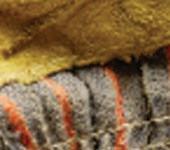

Ashley Duval says her work with Urban Releaf, whether planting trees or taking hydrology readings,

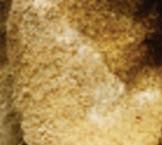


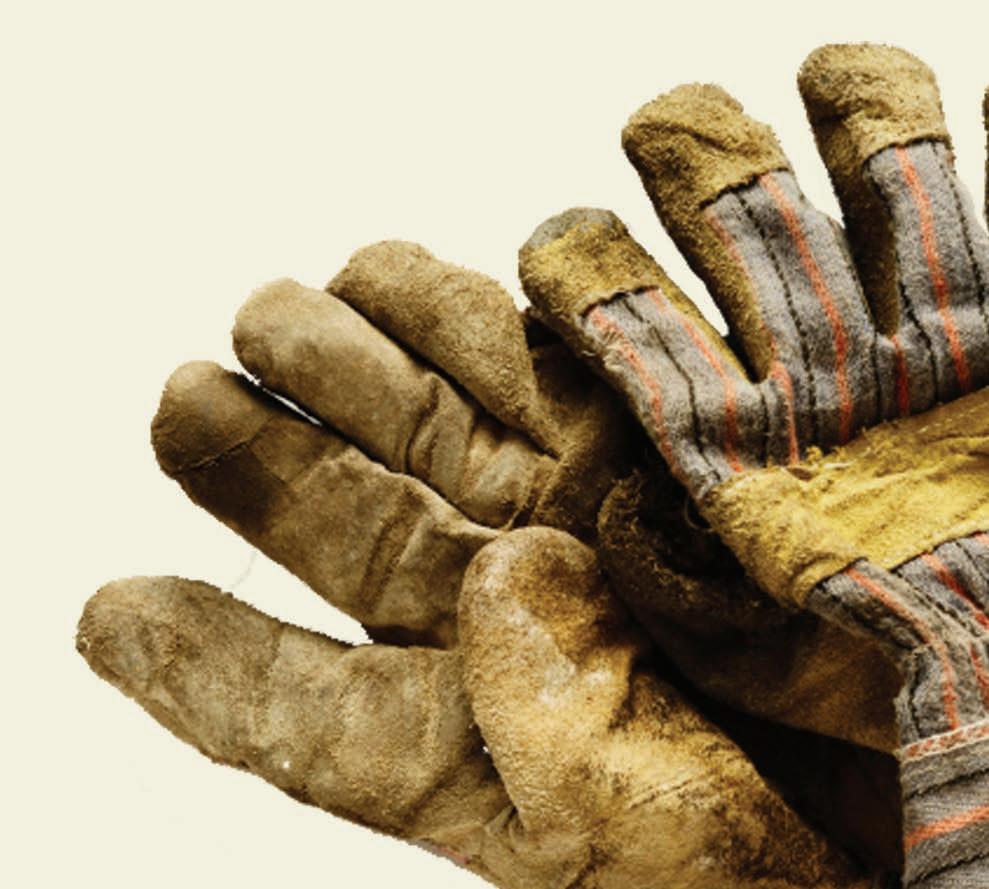

PHOTO CREDIT: All others iStockphoto 20 BREAKTHROUGHS FALL 2009
always attracted attention in the community. When locals found out about the organization, many signed right up. “They didn’t care what tasks they were doing at first,” said Duval. “People took advantage of the opportunity to step up their game and rise to challenges. There is a great sense of satisfaction in receiving a paycheck and knowing you earned it.”


“This demographic didn’t have the luxury to be concerned about environmental issues, but we were able to reach them with jobs,” Duval says. “I saw many of the youth who went through the program go on to college, some in urban forestry programs. People wonder why there are not more people of color in environmental movements, but I find it is often just a matter of exposure.”
Shakur fondly remembers one success story at our next stop on West and MacArthur. “That’s Rukeya Harris’ old house,” she says, pointing to a white building next door to the Beacon gas station. “I met her when she was out here hustling gas.” Harris was fascinated with tree-planting and kept pestering Shakur for a job, week after week, until Shakur was finally able to hire the 12–year-old on a youth stipend. Harris worked with Urban Releaf until she was 18, and is now on the dean’s list at Clark University in Atlanta, studying biology.
ot everyone gets excited about new trees. Most tree complaints stem from maintenance costs, damage to infrastructure, and liability issues. Large trees can buckle sidewalks with their roots and tangle power cords with their branches. Sometimes community members object for more personal reasons. They may be concerned about allergies or even worried about disturbing their feng shui. Sometimes there is a preference for certain species. Shakur says she has found that Asian and Latino communities prefer flowering trees, while the black community often prefers palms.
Getting buy-in from the local community can be key to a planting’s success. Berkeley’s leading urban forestry expert, Professor Joe McBride, recounts one infamous project in Mexico City back in the 1970s,









21 COLLEGE OF NATURAL RESOURCES
when the government wanted to plant trees to help combat air pollution. They placed a grid across the city and planted a tree just about anywhere they could, with no public input whatsoever. “Overnight people pulled them out of the ground and threw them on the street,” says McBride. “It was a failure in large part because there was no attempt to communicate with the local people and get their input. There was also a failure to educate the community about the benefits of trees and to explain some of their perceived problems.”
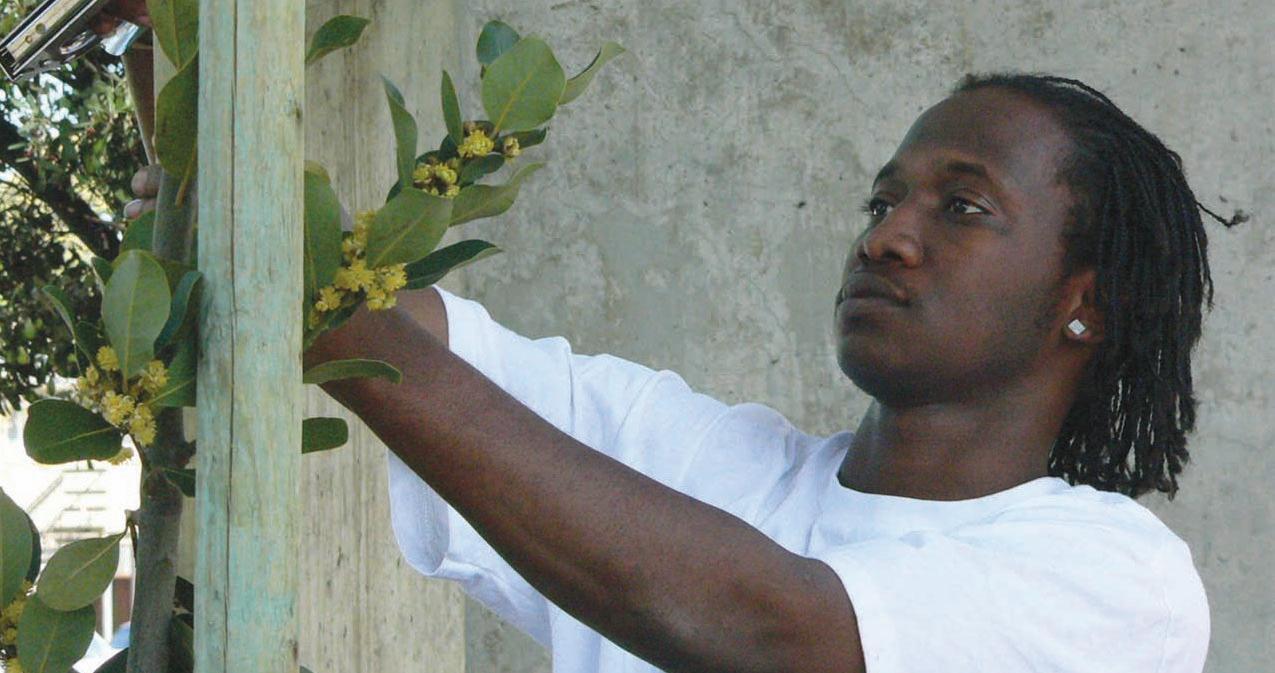
As we walk along MacArthur Boulevard, Roman talks about how local support can make a real difference in tree mortality. Stooping down in front of an abandoned, boarded-up house, she picks up a piece of trash. “This is what I see when I’m doing my research,” she says. “Why is this trash here? It is in front of an old, boarded-up house. Nobody cares about it.” She has a hunch that the blocks with the least trash will also have the healthiest trees. “I’ve had people come up to me during my research and say, ‘I take care of those trees. I tell those boys not to mess with them.’”
Shakur and Roman take me a few blocks away to 31st Street, between Market and San Pablo. “This is the worst block that could actually be the best block,” Shakur sighs, shaking her head at the wide expanses
of empty concrete. The street’s distinct lack of trees, however, makes it an ideal location to study the effect of canopy cover on urban runoff and pollution. Jamal and Hakim Davis use crowbars to pull up the storm drain at the end of the street, exposing a meter underneath installed by the U.S. Forest Service’s Center for Urban Forestry at UC Davis.
During the 2005–2007 rainy seasons, researchers from the US Forest Service and UC Davis worked with Urban Releaf to monitor storm runoff in West Oakland’s Ettie Street watershed. The researchers measured storm runoff from two comparable blocks, one with six times more vegetation cover than the other. They found that the sparsely vegetated block generated almost four times more runoff than the heavily vegetated block, with much higher pollutant levels in the water. A concurrent study measured the amount of rainfall and pollutants intercepted by various trees, and found that each of the 1,254 trees in the study area intercepted nearly 160 gallons of rainfall per year, reduced 48 pounds of nutrient pollution, and captured one pound of heavy metals that would otherwise flow into the Bay.
Urban Releaf not only provided a workforce for that study, it also exposed the many members of the community to science in action. Women on welfare and
22 BREAKTHROUGHS FALL 2009
idle teens who were loitering on the streets one day were out in the field and the next, working side-byside with scientists, learning GPS and database skills, collecting water samples, and even helping to present data in front of state policy makers.
“It was simple science,” says Duval.“The sense of results and impact this project had is something you just don’t get in the classroom.”
oman’s five-year study on tree mortality adds another important dimension to the research in the Ettie Street watershed. It’s an important piece of the puzzle that is often overlooked in urban forestry. For researchers to make accurate models and urban foresters to create successful management plans, they need to take into account how many trees survive and why.



“Right now, there is a lot of funding for planting, but not for replanting,” says Roman. “Everyone realizes tree mortality is a problem, but we don’t have data to predict it. This is the first study that will examine how mortality changes over time and how it differs with tree type and size.”


There are difficulties in conducting this kind of study in the urban environment, as we see firsthand in our next stop. We’re a few blocks down San Pablo at 34th Street, looking for a good place to plant a young oak. Jamal and Hakim locate a tree well on a busy corner, next to an empty parking lot and liquor store. This site has already been planted by Urban Releaf, but now only a thin, broken trunk sticks out of a thicket of weedy grass. As the guys dig the old stump out of the ground, they unearth an empty flask and a hypodermic needle.
Roman squats down to examine the remaining stem. “In the city, you’re not always able to figure out why trees are dying,” she says. “A tree might be gone when I come by to do fieldwork, and I’m not sure why.”
Determining the cause of death for urban trees can be tricky business. This tree could have been pulled out by the city, by a neighbor, by vandals, or even hit by a car. Maybe it was dying due to lack of water or from pest infestation. Maybe it was perfectly healthy, but someone decided they didn’t like it. In her research, Roman is trying to correlate dead and missing trees with several factors, such as tree species, size, and prior health. She hopes to add several other factors to her research in coming years, including the
amount of litter nearby, the number of vacant lots, and the maintenance level of nearby yards.
A few blocks down San Pablo we spot another empty tree well and decide to plant the final oak tree there. “We always try to hit the empty tree wells,” says Shakur. She shrugs. “I have no idea what happened to that tree.”
Jamal and Hakim get out their shovels and get to work. They know the drill by heart. They’ve planted hundreds of trees, and they will probably plant hundreds more. When the hole is deep enough, they take the sapling from its pot, gently loosen the root ball with their hands, and place it into its new home. Before we walk away, Shakur looks up at the thin branches and smiles. “One day, this tree is going to be 45 feet tall and beautiful,” she says.
SAW-LEAF ZELCOVA (Zelcova serrata) Located in the courtyard east of Kroeber Hall, this tree weighs nearly 40,000 pounds and has a 40-foot limb span.
23 COLLEGE OF NATURAL RESOURCES
JIROOKOCHI
Risk in financial markets is nothing new, and neither is the all-consuming desire to avoid it. Ask Jiro Okochi when those now-famous risk-minimizers known as derivatives arrived on the scene, and he directs us back a bit farther than the mid-1980s, all the way, in fact, to the sixth century BC , when the Greek philosopher Thalus predicted that the next year’s olive harvest would be particularly abundant. Thalus secured the rights to local olive presses for cheap. The next year, when his forecast proved accurate and demand for the presses soared, he rented them out at a higher price and made a killing. Okochi considers this an early example of an options contract—that is, a derivative in its infancy.

1987
24 BREAKTHROUGHS FALL 2009
GENETICS
Derivatives are notoriously complicated, but Okochi not only understands them, he spends his days helping corporations and institutions manage them. He’s the co-founder and CEO of Reval, a New York-based financial technology firm that offers a range of software and services to help companies value derivatives, manage their risk, and adhere to increasingly intricate standard accounting rules.
Okochi says the idea for Reval coalesced in the late 1990s, a few years before the feverish dot-com boom went bust. He and a partner decided to combine their expertise in derivatives and web technology to help companies comply with highly complex derivative accounting requirements. In the decade since they launched, they’ve become a global firm with 200 employees and 350 worldwide clients, with names like Ford, Microsoft, UPS and Google. The firm has won numerous awards and is considered the industry’s leader.
Yet as a kid, heading a company wasn’t something Okochi could have envisioned. “My dad was an executive at Sony, and I never saw him,” he explains. Instead, Okochi was a fan of microscopes and chemistry sets, which may explain why he doesn’t quite fit the stereotype of a financial-industry CEO.
In a deliberate effort to plot a course different from his father’s, he ended up at Berkeley, where he studied genetics —unraveling the mysteries of African frogs and fruit flies. He planned to become a veterinarian, but after graduation another option appeared out of left field.
In the late 1980s the Japanese banking system was the most powerful in the world. Friends from Japan assured Okochi that if he wanted a job in finance, he could get one—never mind that he knew nothing about the financial markets.
“If you look Japanese and speak Japanese,” they told him, “you can get a job on Wall Street.” So the summer after he graduated, he hopped on a cross-country flight with his head buried in a copy of Understanding Wall Street, and was soon working as a trader at a Wall Street investment bank. It was a stressful time to be a novice trader on Wall Street: this was the fall of 1987, just a month before the stock market crashed.
The current financial meltdown makes the ’87 crash look like a hiccup. Nevertheless, Okochi received an object lesson in the vicissitudes of the markets, a lesson that many in the financial world seem to have missed.
Okochi spent two years as a trader and then found his way into derivatives, which provided more of an intellectual challenge. For people outside the financial world, trying to
understand how derivatives work can be daunting. Simply put, a derivative is any security whose value is derived from an underlying asset. They’re often used to guard or “hedge” against fluctuations in the market—changes in interest rates, currency exchange rates, or commodity prices. In the simplest derivative, an interest-rate swap, two parties agree to “swap” interest rates on their outstanding loans: a company with a fixed-rate loan will switch to an adjustable rate, and vice versa. Why? Because each company believes the swapped rate offers a better deal.

Derivatives can be very hard to value, a fact that led Warren Buffet to famously label them “weapons of mass destruction.” Okochi takes a more measured view, although he, too, resorts to a violent metaphor. “Let’s say a derivative is a gun. You can use a gun properly, never draw it, never pull the trigger. Or, you can use it to kill people.” In other words, derivatives aren’t to blame for the mess we’re in; people and vices like greed are. Okochi says the goal at Reval is to enable companies that use derivatives to hedge risk to do so intelligently.
As the company grows internationally, with offices in Europe, Australia, and Asia, Okochi does a lot of work overseas. Which means that he sometimes wakes up miles away from home and his two young children. But he emphasizes that his life is about more than work, and that Reval maintains a strict family-first policy. And it’s clear that he means it. His younger child, a boy named Finn, was born with Wiscott-Aldrich syndrome, a rare, usually fatal genetic disorder. Finn, now three, eventually underwent a bone-marrow transplant that doctors say has cured him. Finn was lucky to be matched with a part-Japanese bone marrow donor, as it can be difficult to find genetically compatible tissues for ethnic minorities. Okochi now encourages others, especially Asians, to register as potential bone marrow donors. He has held three bone marrow registration drives, including one at Cal with the ASUC.
A former genetics student, Okochi seems to be in awe of the gene technology that helped save his son’s life—a technology that manages risk of an entirely different kind.
 Written by: Carol Ghiglieri | Photo by: Bethany Bandera
Written by: Carol Ghiglieri | Photo by: Bethany Bandera
SPOTLIGHT
COLLEGE OF NATURAL RESOURCES 25
1974 CONSERVATION OF NATURAL RESOURCES


PAMELA PEEKE MD,MPH
Pamela Peeke never planned to become one of the most sought-after female physician speakers in the world, nor did she plan, for that matter, to become a doctor at all. And yet her impressive resume encompasses patient care, traditional and alternative medical research, and a skyrocketing prominence as a sort of medical celebrity. Her diverse career arc suggests that open-mindedness, as much as skill and foresight, can be a crucial component to success.

OLIVE TREE (Olea europaea) Originally planted in the College of Agriculture orchards, it was moved south of Giannini Hall in 1926 to permit construction of the building. 26 BREAKTHROUGHS FALL 2009
Peeke is an assistant professor of medicine at the University of Maryland; the chief medical correspondent and host of her own shows for Discovery Health TV; a New York Times best-selling author; a radio host; a celebrity blogger; team doctor to the NBA’s Washington Wizards; and an expert commentator for Oprah and The Today Show. If she had to single out one moment that launched her on this path, she would point to an incident during her senior year at San Francisco’s Lowell High School. Even today, Peeke attests, only half-joking, that it accounts for a large part of her career planning. It lasted about ten seconds.
“Some nice guy from the yearbook came up to me and said, ‘Okay, so what do I put under your name? Everyone at Lowell is pre-something, so what are you?’” recalls Peeke. She didn’t have a clue. “What do you like?” he pressed. Science, math, and people. “That sounds like a doctor,” the classmate said. Peeke was game: “Okay, let’s do that!” She never looked back.

Peeke has a name for her career philosophy: “leading with passion.” This doesn’t refer to being a leader, but rather to allowing inner passion to lead the way through life. To a Berkeley graduate this idea may seem like a cliché; to aspiring doctors, perhaps, overly facile. It certainly stands in stark opposition to what Peeke says she encountered frequently among classmates during her premed days at Cal. “I’d be sitting through organic chem, and they’d be like, ‘Oh gosh, I’ve got to get into medical school immediately,’” Peeke says. “They’ve gotta do this, they’ve gotta do that—and they were missing the entire journey.”
“It really is about putting together your own path, and never being afraid,” she said. “At the end of the day, it’s about uniquely customizing the journey, and in order to do that you need fearlessness and courage.” Her tone, fearless and courageous in its own right, seems forged from years of practice. At this stage, Peeke’s advice speaks for itself. Since graduating from Cal with a B.S. in conservation and natural resources in 1974, and with a combined master’s in public policy and public health in 1976, Peeke has continually welcomed opportunities and challenges without fear of failure or concern for the “right” way of doing things. To her, it’s not been about thinking outside the box, but about ignoring the box altogether.
Peeke earned her medical degree from Michigan State University, and completed her internship and residency training in internal medicine at George Washington University. She spent six years in critical care and trauma, then secured a Pew Foundation fellowship for research on nutrition and metabolism at UC Davis. After completing this work, Peeke
was prepared to take a job as an assistant professor of medicine. But the predictable path was not for Peeke.
A chance meeting with a colleague in Washington, D.C., led her to the National Institutes of Health in Bethesda, Maryland, as a senior research scientist examining the relationship between the stress hormone cortisol and fat. While she was there, NIH made a surprising decision to create an office of alternative medicine. Peeke had little experience with alternative medicine, but a fortuitous seat at a panel next to the new director helped land her a gig as the office’s first senior research fellow. Here, she was able to approach stress and fitness from a whole new angle—one where nutrition and physical activity were crucial and where the likes of shark cartilage and bee pollen warranted serious study. In 1990, she started work there as a traditional molecular biologist in her laboratory at the NIH Clinical Center, while continuing to approach her mind-body research across campus at the Office of Alternative Medicine. “I often felt like Dr. Jekyll and Mr. Hyde,” she recalls.
“By this time I became a real anomaly,” she said. “I was a physician, a scientist, a woman, and this surprising expert in nutrition. In those days, no doctor was trained in nutrition!” In 1993, CNN came calling for an authoritative source. CNN continued to call, deeming her “one-stop shopping” because she could speak plainly about a wide range of medical topics. Next it was the evening news, then the morning shows. Then the Discovery Channel. “They didn’t have to interview an RD [registered dietician], a doctor and a scientist. I was like rolled up in one so I became a real hit with everyone because I made their life easy,” said Peeke. Her down-home sense of humor, exuberant personality, and jargon-free speech sealed the deal.
By now Peeke’s personalized career path had become her calling card, a ticket through a series of increasingly expansive doors. Not long ago, the American College of Sports Medicine named Peeke the national spokesperson for its “Exercise IS Medicine” campaign. WebMD recently contracted with her as its first celebrity expert covering the holistic and healthy lifestyle space. The list grows every year. And in keeping with her brand as “the doc who walks the talk,” Peeke is training for the Boston Marathon, to be followed by her first half Ironman.
While it seems she’s landed a charmed career, Peeke has never been exempt from the hard work necessary to convert opportunity into success. “It didn’t feel like a mountain of work because I live by the principle that if you’re doing what you love passionately and fearlessly, you’ll never work a day in your life,” she said. “That’s a critical element in mastering life’s journey”.
Written by: Nate Seltenrich | Photo by: Bethany Bandera
SPOTLIGHT
COLLEGE OF NATURAL RESOURCES 27
New Alumni Challenge: MATCHING PROGRAM QUADRUPLES NEW ALUMNI GIFTS!
Michael Colvin , Environmental Economics ’05 and Master of Public Policy ’07, was among the very first new CNR alumni to commit to the New Alumni Challenge, a 3:1 matching program that quadruples the donations of recent graduates.
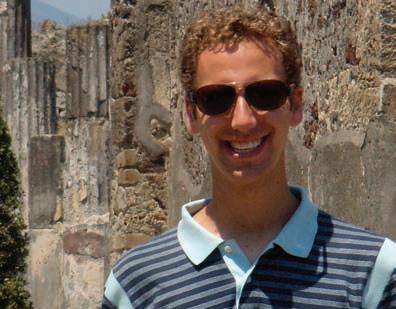
The match, provided by the trustees of the UC Berkeley Foundation, multiplies the impact of gifts up to $1,000 made by graduates of the Classes of 2005–2009 and the Class of 2010 in their Senior Gift efforts.
Colvin, now an energy and climate change policy analyst for the state of California, says he loves working in the public sector. “I get to make a difference on important emerging issues that I am passionate about, on issues that actually matter, thanks to my time at Cal,” he says. “But working for
the state doesn’t really allow me to make much of a financial contribution back to the campus that gave me so much, especially this early in my career.”
Colvin initially thought the small contribution he could afford would not have much impact—he worried that it would just be a drop in the bucket. “But I also feel it is important to give back so that future classes have the same great opportunities that I had.”
“I was really excited to learn about the 3:1 match. This is perfect for new alums like me, because it stretches our small donations into a lot more.” Colvin figured that as a 2005 graduate, he could take pride in the symbolism of making a $20.05 gift. After the Trustees’ match, that means more than $80 for the Berkeley Fund for Natural Resources.
“I want UC Berkeley to thrive,” Colvin says. “I take great pride in calling myself a CNR alum; I want it to mean just as much 10 years from now as it does today, and I think my gift will help make certain that it does.”
New Alumni Challenge gifts of $250, which will equal $1,000 when matched, make you a member of Cal’s Charter Hill Society and the College of Natural Resources Golden Poppy Circle in the Educator’s Society. These two societies of donors receive special benefits and are committed to preserving and enhancing the excellence of Cal and the College of Natural Resources.
Make your gift today at http://nature.berkeley.edu/give Or contact
Donna Chan at (510) 642-6707, donnachan @ berkeley.edu
COLLEGE SUPPORT
Become part of a community of more than 60,000 alums, parents, and friends of the University who are committed to keeping Cal the #1 public university in the country.
28 BREAKTHROUGHS SPRING 2009
Photo courtesy of Michael Colvin
Working high above the trees at Blodgett Forest Research Station, scientists prepare instrumentation for the Biosphere Effects on Aerosols and Photochemistry Experiment (BEARPEX). BEARPEX involves about 60 research collaborators led by Berkeley professors Allen Goldstein from ESPM and Ron Cohen from Chemistry, along with teams from 10 leading research universities. Together they are studying the chemical processes occurring in urban air pollution plumes coming out of California’s Central Valley and their interaction with natural emissions from the forests to form ozone and particulate matter.
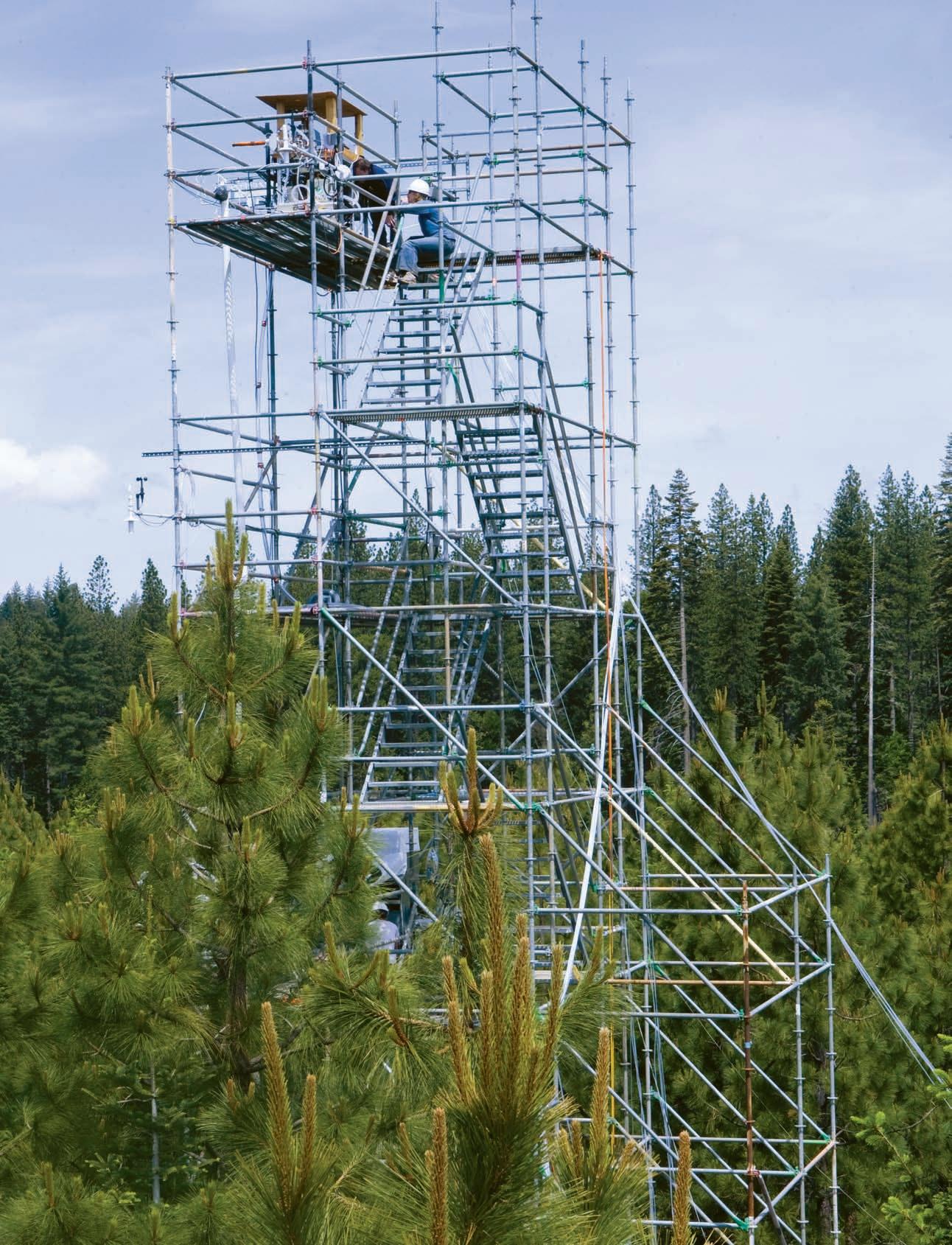
BACK STORY
Photo courtesy of James Block











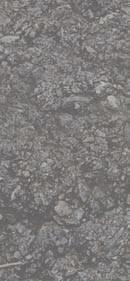











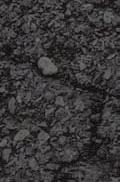






























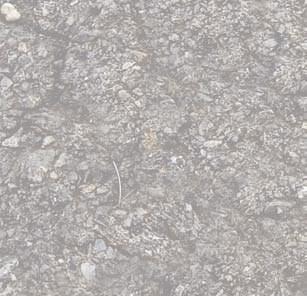
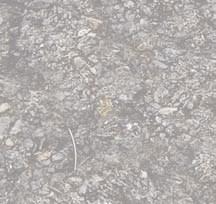








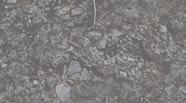








Non-Profit Organization U.S. Postage PAID University of California
101 Giannini Hall #3100 Berkeley, CA 94720-3100












































































































 Making vineyards inviting to natural predators helps grape growers go organic. Photo courtesy of James Block
—Cyril Manning
Making vineyards inviting to natural predators helps grape growers go organic. Photo courtesy of James Block
—Cyril Manning


































































































































































 Written by: Carol Ghiglieri | Photo by: Bethany Bandera
Written by: Carol Ghiglieri | Photo by: Bethany Bandera








































